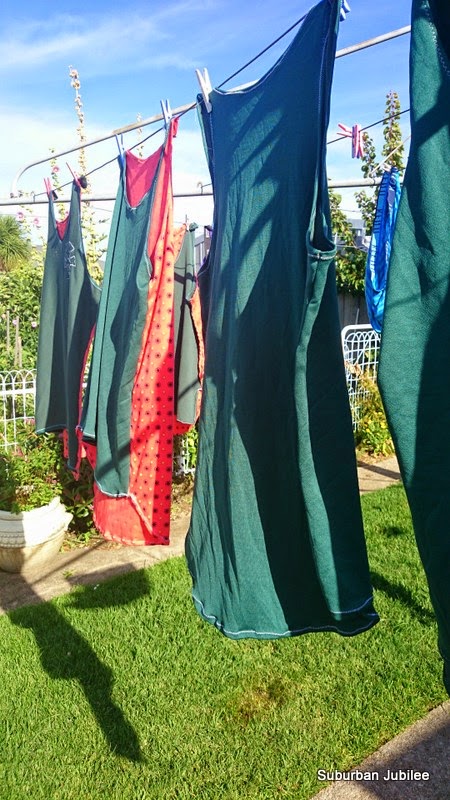I find posting about our garden helpful each year as it makes a good reference resource for subsequent years plantings and designs.
If you are slightly interested I'll run through some of the variety and how we feed ourselves for a year from our garden. If the thought of yet another set of suburban garden photos bores you to tears, click away now, I'll certainly understand.
The arch and gates and fencing have all been made by Craig from recycled materials. The cubby house has been moved further down to the back fence in order to expand growing space in optimal sunlit spaces.
Zucchini and coloured chard grow side by side with asters and sunflowers. Mallow is allowed to grow moderately and several edible perennials and herbs all have their place within the abundant landscape.
Pumpkins have self sown as usual and have been giving the dahlias grief as they compete for space and over run borders. Beyond the dahlias are the 20 odd tomatoes now ripening rapidly. Sounds like a lot but we have worked out that this number is what we need as a minimum for a years supply of bottled tomatoes, sauce and tomato paste.
The Russian Giant sunflowers are almost touching the fascia board but the herbs below are still thriving and the lemongrass well protected. The apricot tree espaliered on the fence (not pictured) had a huge crop this year. The fig tree is laden but hasn't had enough water this year making the fruit slow to ripen though the boughs are laden. A cucumber climbs into it's branches trying to break free from the pumpkins and dahlias.

Subsequent sowing of carrots, beets, lettuce and radish ensure constant food supply. Coloured chard and spinach are also a daily part of the chooks diet. In the foreground above you can see Granny Smith apples ripening. A new (to my garden) bean is climbing on an old gate placed in the bed. They are an old Cherokee variety called "Trail of Tears" and I watch them daily with great anticipation of the beautiful pink pods to come. Parsley and lovage enjoy constant picking and towards the top right of the bed, spring onions are almost becoming too big. I've started harvesting, washing, chopping and freezing them for the year to come. Seedlings sown for autumn/winter are starting to emerge so that when the summer glut is over we will be picking greens, black Spanish radish, kohl rabbi, brussel sprouts and cabbages...
(The growth to the right of the path is the fairy garden)
A new house is under construction on the block next door and it is massive and right on the boundary. It is two stories and in winter we will not see the sun due to its low position on the horizon and northerly track across the sky so this bed will be undergoing a radical change. Where once we grew all year round, this bed will now hold berries of all kinds and deciduous plantings that will hibernate happily over winter and be relatively shade loving.
For now potatoes bloom under the nectarine tree and more plantings of carrot, beets, spinach, kale, asparagus and popping corn. The Tasmanian pepper berries are also ready for harvest.
Some of Craig's chillies, he has planted 50 this year! Bit of a fan. These enjoy the hot spot next to the house.
The corn and sunflowers reach for the sky almost hiding the bird house on it's tall pole. Below them are bush beans and another couple of zucchini and a cucumber. Beyond the corn is a lemon tree and a Tahitian lime tree with tomatillo/cape gooseberries below that. Climbing the stair railing is another variety of climbing bean called "Purple Torfino". Towards the front of the yard are the blackcurrants, strawberries, blueberries and my yet to fruit pomegranate. New Zealand yams are coming up in all sorts of places (as a member of the oxalis family is wont to do!)
These are the sort of quantities and the scale of planting that we require to eat fresh and preserve for later. This is how we achieve the variety and seasonal traversing. You see it's not all edible but mostly.
(PS do you see a little someone peeking out of the window above? Probably Miss Bella!)
Thank you for your indulgence but it does help to place things and give perspective because you always think you'll remember but much does slip away and the years merge.























